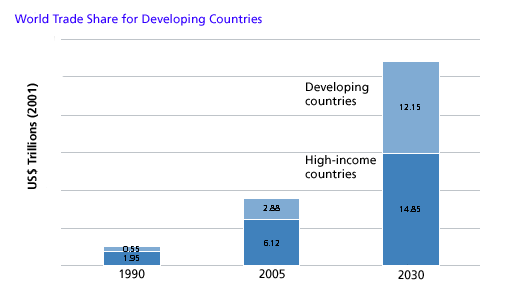Trade Finance: Servicing an Evolving Global Economy
Abstract
Trade financing is evolving due to changing global trade patterns as well as shifts in supply and demand. The emergence of Asia and growth prospects in Latin America and Africa have had a significant impact on banks’ trade financing techniques.
In a new report, Trade Finance: Servicing an Evolving Global Economy, Celent provides in-depth analysis of new international trade patterns. In the first half of 2008, world trade growth decelerated to 4.5 percent, down from 5 percent in the third quarter of 2007. It is likely to be even lower by the end of 2008. In developed economies, business and consumer demand have continued to fall, and industrial production has weakened. In contrast, the growth rate in developing countries is currently around 7 percent, contributing more than 40 percent to global output growth in 2007.
South-South trade, the trade between developing countries, is playing an increasingly important role. Asia is the world’s most important trade hub, with intra-Asian trade accounting for about 90 percent of total South-South trade. As of 2008, developing countries have a 40 percent share of world exports. The 2030 estimate is that 45 percent of international trade will be by developing countries, while higher income countries’ share will fall by 13 percent to 55 percent.
Latin America is another emerging trade hub. Demand for agro-products from Latin America is increasing, driven by the rapid expansion of the middle class in China and India. This demand has been heightened by Latin America’s use of alternative energy sources.

Trade financing techniques are changing as credit availability becomes more limited and risk capital requirements are on the rise. Open accounts seem to be the preferred choice for trading firms and more and more clients want their banks to enhance their supply chains.
Intrafirm trade comprises 45 percent of international trade and is a major driver of open account transactions. Another trend is the ever increasing contributions of small and medium enterprises to merchandise trade, which range from 20 percent to as high as 60 percent in some countries.
"There is a strong belief that we are just one major crisis away from returning to traditional products, but in the aftermath of subprime crisis, we have not seen a return of the L/Cs," says Axel Pierron, Senior Vice President at Celent and coauthor of the report.
"Basel II will limit the trade financing activities of banks through higher allocation of risk capital," says Sreekrishna Sankar, analyst at Celent and co-author of the report. "With the securitisation market experiencing turmoil, international trade financing will attract other sources of funding such as hedge funds."
This report examines emerging trade flow patterns and the new opportunities trade finance represents for banks. It looks at how banks should adapt their business models based on trends in trade and tighter credit controls. The report concludes with key points for banks on refocusing and repositioning themselves in order to remain competitive in this new trade climate.
This 30-page report contains 12 figures and 4 tables. A table of contents is available online.
of Celent's Corporate Banking and research service can download the report electronically by clicking on the icon to the left. Non-members should contact info@celent.com for more information.
